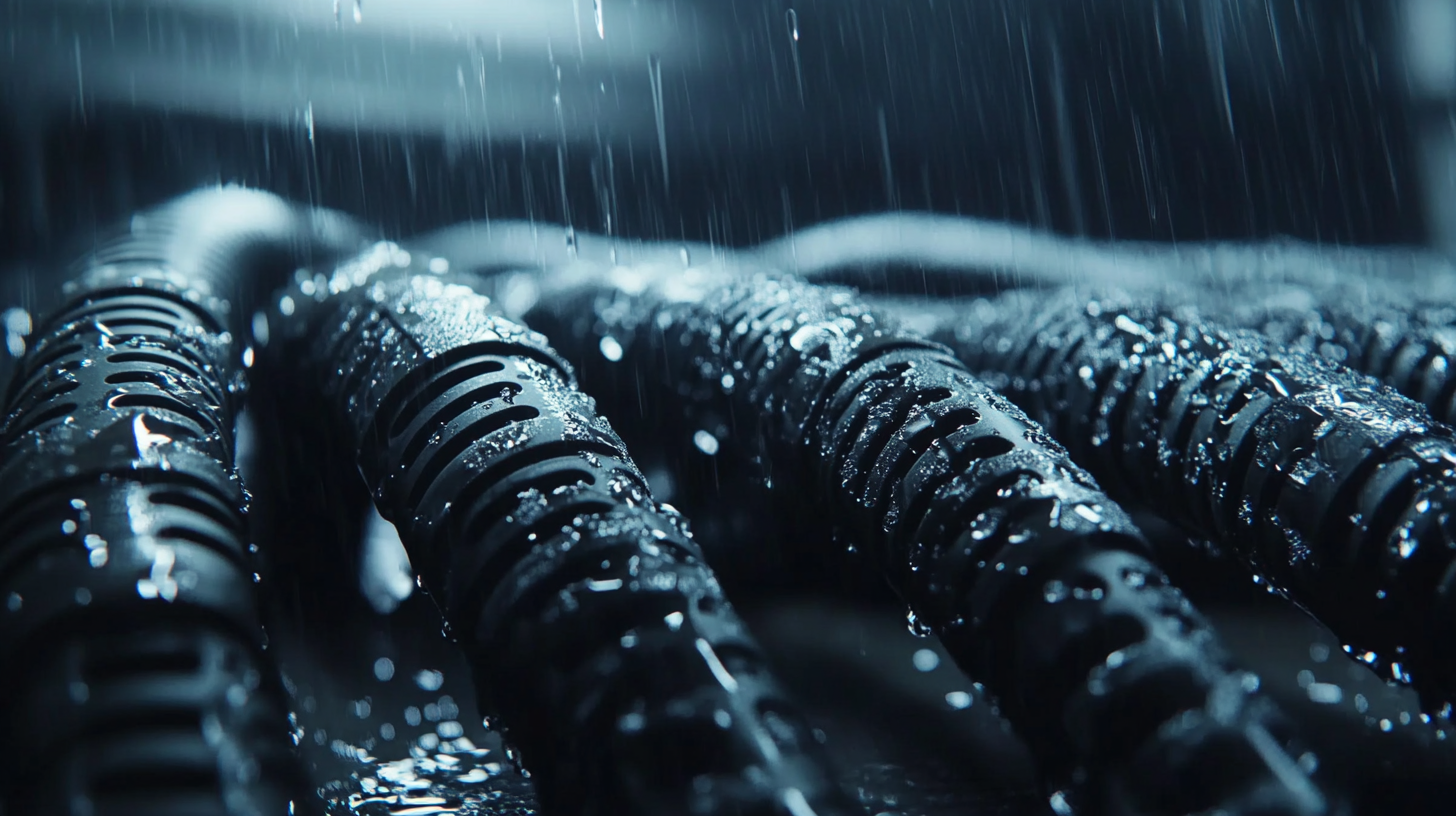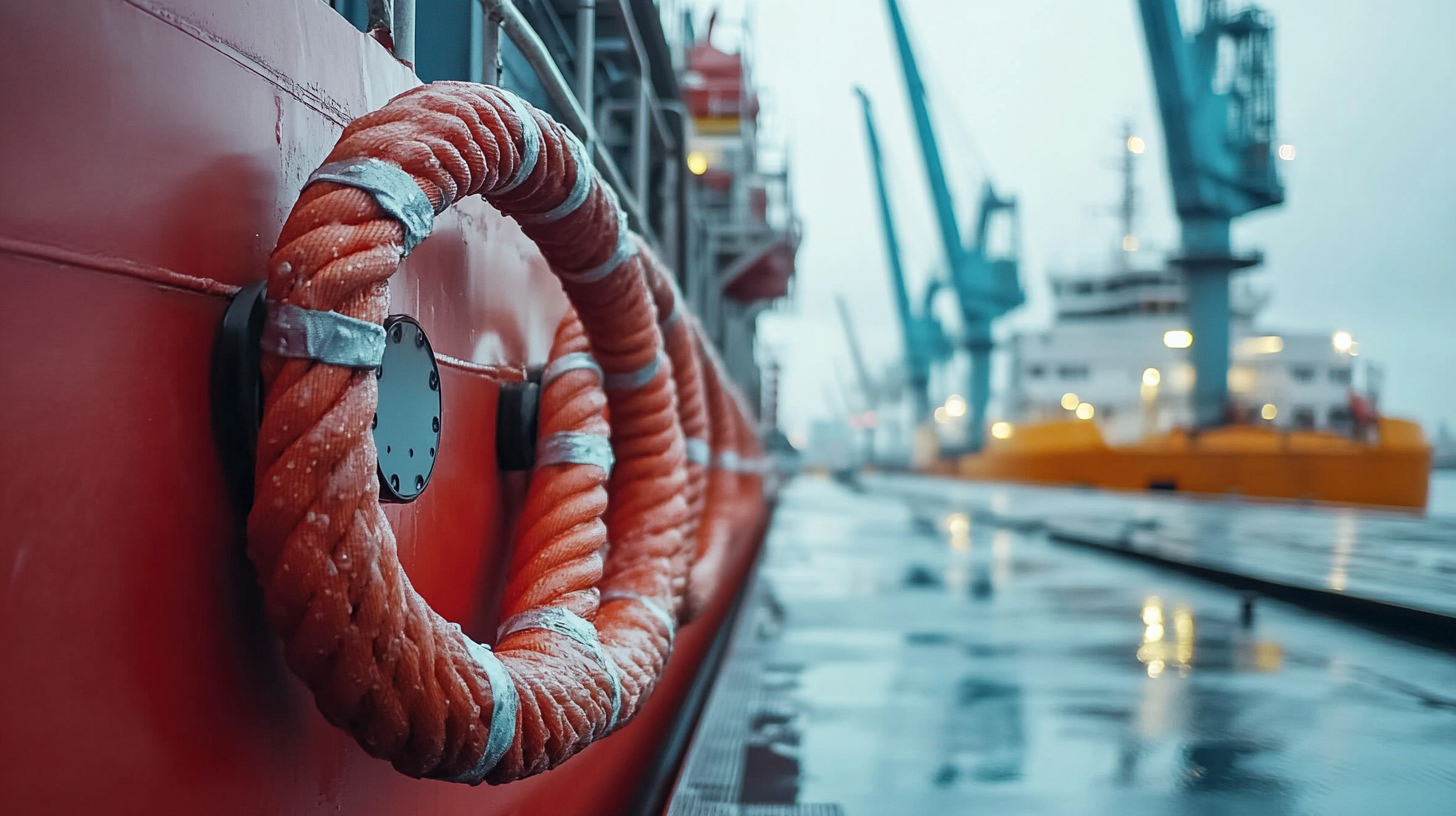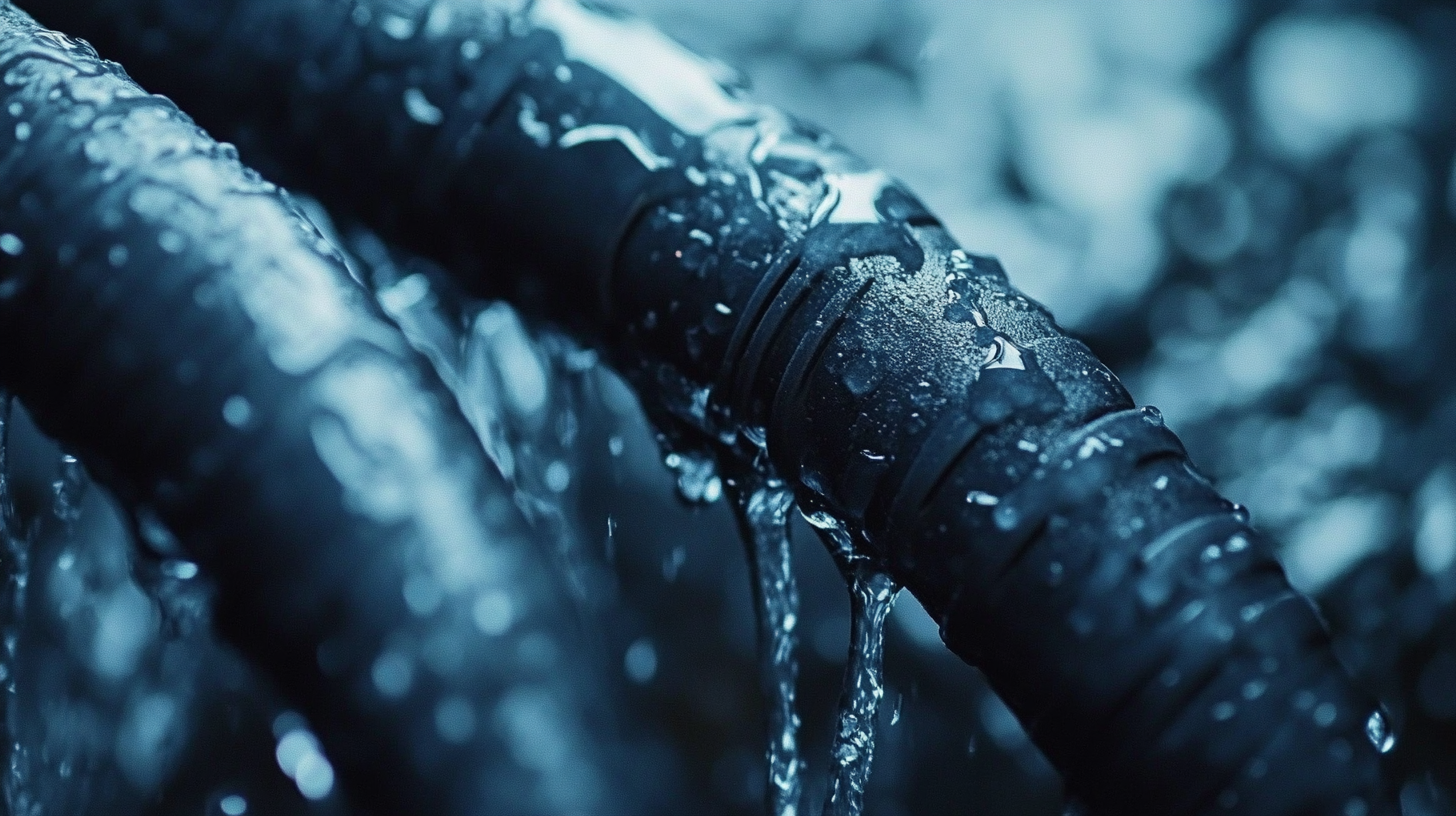In this development of global supply chains, reliability and durability of components have become critically important. The waterproof cable connector is one such essential technology that gives confidence in harsh conditions. The demand for waterproof cable connectors, in turn, has reflective of industry trends that emphasize sustainability and efficiency-from industrial applications to marine operations. Risk mitigation associated with exposure to water has resulted in significant changes in the designs and operational capabilities of these connectors to address the very unique challenges imposed by different operational conditions.
This blog post intends to detail the innovative history of waterproof connectors, pointing out how they have traversed the different paths of transformation over the years. We will see how these connectors have lifted operational efficiencies and have also come to the rescue of safe equipment and the integrity of supply chains all around the globe. The interrelationship between technology, market demand, and environmental condition is, therefore, discussed to give an informed worldview of how waterproof cable connectors affect modern-time industry and help make a robust global supply chain.

Hence, such driving forces include trends for demanding waterproof cable connectors into supply chains worldwide especially to those industries having rugged and reliable connections in their harsh environment. Such as these ever-changing industries come the demands for connectors that can withstand extreme changes such as moisture, dust, and temperature going so far. The rise of automation and smart technology has made this need even more consuming considering that such equipment operates both indoors and outdoors. Current reports have indicated that the global waterproof connector market is estimated to grow at a compound annual growth rate (CAGR) of about 5% over the last few years. The increase is attributed to the growing sectors of telecommunications, aerospace, and automotive, where reliability in electrical connections is a primary concern. For example, the constructions of electric vehicles as well as advanced manufacturing technologies increase the need for high-performance connectors operating under rigorous operational conditions. In addition to that, these regional developments, such as the forthcoming industrial connector, cable and harness exhibitions taking place in Wuhan, are vital in bringing such trends to the forefront. They will talk not only about the showcase of innovative solution developments but also about the enhancement extensions of waterproof designs, durability, and easy installability. With major players, this event shall push for more innovations and collaboration for the advanced waterproof connector arena in representing the whole new landscape of global supply chains shifting into more resilient infrastructure.

With the recent advancement in design and manufacture of waterproof cable connectors, the changing demands of global supply chains have brought a fresh perspective. As industries begin to use IoT technologies, it has become ever more crucial to have efficient, reliable waterproof connections. Future connector design emphasizes miniaturization and high-speed connectivity, which heralds waterproof connectors that not only meet but exceed the austere requirements present in different environmental settings.
Up-and-coming events like the Industrial Connector Exhibition, due to take place in Wuhan, China, from October 11 to 13, 2025, testify to the increasing significance of such innovations to this industry. This exhibition will convene the most useful contributors and firms to demonstrate innovations in industrial connectors, harnesses, and cables. With the industrial connector market exceeding $7.8 billion in 2023 and growing at approximately a 3.3% compound annual growth rate expected through 2032, technological advancement meets market demand, underscoring the relevance waterproof connectors have in today's supply chains.
Manufacturers are now engaged in the innovation of materials and technology to improve the mechanical strength and functionality of waterproof connectors. This is facilitating not only development in accord with harsher conditions of the environment but also increased manufacturer expectations from sectors varying from automotive to telecommunications. As enterprises continue to rationalize procedures and take advantage of technological advancements, the waterproof connector solution field will remain paramount in conversations about industrial innovation and efficiency.

Waterproof cable connectors are the new focus of manufacturers across a range of industries, especially with technology advancements and the ever-increasing demand for dependable connectivity in extreme environments. A number of challenges stand in the way of such production processes, severely affecting the global supply chain. According to a report by MarketsandMarkets, the waterproof connector market is expected to reach $$10.3 billion by the year 2026 with a growth rate of 9.5% CAGR. This spike demonstrates not only demand but also heightened competition among manufacturers who want to improve and innovate their product lines.
One of the main problems manufacturers face is the need to meet extremely restrictive international standards. Very rigorous testing and certification procedures may be expected, for example, for connectors with actual waterproofing, which means IP67 rating or above. Compliance with such standards adds even greater pressure on manufacturers; any infringement would lead to expensive rework and tarnish market credibility. Grand View Research reports that 50% of manufacturers cited regulatory compliance as a chief impediment in the exercise of their operational strategies.
The sourcing of quality raw materials poses another barrier. Increasing global demand means that availability of materials like silicone and other sealing compounds can vary, delaying production schedules. This situation has been aggravated due to supply chain disruption, which received particular notoriety during the Covid-19 pandemic. According to a recent study by McKinsey, an increased focus on risk management in logistics and delays in material supply will force companies in the electrical and electronic industries to reassess their sourcing strategies to create stronger resilience-in-supply-chain-management systems.
In addition, continuous investment in research and development is needed for technological advancement in waterproof connector designs. Manufacturers must not only stay abreast of their innovative materials and technologies, but also bring in automation to enhance efficiency and scalability. The case for investment in R&D is further bolstered by a Deloitte report that claims that companies that invest heavily in innovation see profitability rise by as much as 20%. It will be quite hard for many manufacturers to strike a fine balance between maintaining current production capacity and investing in future technologies in this changing environment.

These waterproof cable connectors have become instrumental in improving the sustainability of supply chain practices. Their watershed role now turns out to be their union as they are perceived as a part of the entire components in the way in which the global demands for industries creating louder pressures for minimizing environmental footprints. According to a report released by MarketsandMarkets, the global waterproof connector market is expected to grow at a rate of 5.7% from a base value of $4.47 billion by 2025. This is primarily due to the demand for reliable and durable connections in environments exposed to moisture and other harsh conditions.
Waterproof cable connectors critical failover and maintenance costs in key business supply chain processes. As per the International Electrotechnical Commission (IEC), poor connectors unfit for wet or humid environments are responsible for up to 30% of equipment failures. Using waterproof connectors in the network enables companies not only to prolong the equipment's lifespan but also mitigates the need for its replacement and repair, resulting in lesser waste generation.
A further aspect of sustainability is shifting towards the use of green materials for the manufacture of waterproof connectors. According to industry majors, adoption of these biocomposite materials can minimize environmental footprint during manufacturing and disposal. A joint study by the Carbon Trust said that using sustainable materials in manufacturing electrical components can lead to a 25% reduction in carbon emissions. Thus, waterproof cable connectors serve as a cornerstone for creating resilient and sustainable supply chains - automotive, telecommunications, or renewable energy-delivering greenness in initiatives being pitched globally.
The call for present-day components has been unprecedented-more ever with progressive-industries facilitating reliable, resilient ones. One evident field is the development of waterproof cable connectors, which mainly find applications in the automotive, marine, and telecommunications sectors. In fact, exposure to high moisture levels and other harsh environments highly influences the working of these connector components. However, the proven future shows development in this field, as many manufacturers continue investing in developing new materials and technologies for high durability and functionality.
Smart connectivity is one of the most promising directions for the waterproof cable connector technologies. Smart devices capable of real-time data transmission will transform these conventional simple connectors into smart connectors, as the IoT advances in every field. This evolution will not only enhance interconnection but also will acquire supervising capabilities for maintaining system integrity. The emergence of automation in the manufacturing industry will also probably lead to more developments in connectors that will be flexible to the changing conditions to provide maximum performance even in varying environments.
The market potential for such waterproof cable connectors is huge, primarily driven by the increasing demand for such reliable solutions for difficult applications. Moreover, the transition from gasoline vehicles to battery-operated electric vehicles and from fossil fuels to renewable energy systems has been known to stimulate the demand for these connectors, as they are now essential in the safety and efficiency of these systems. Innovative designs and improved properties of materials can elevate companies in competition within the market that is set for growth. More so, eco-friendliness is going to be an added advantage for the additional uniqueness appeal to the eco-conscious consumer through a higher adoption rate of such materials in connector manufacture, as awareness on environmental issues continues to spread.
The demand is driven by significant trends in industries that require reliable connections in challenging environments, particularly due to the rise in automation and smart technologies, as well as the need for connectors that withstand extreme conditions like moisture and temperature fluctuations.
The global waterproof connector market is expected to grow at a compound annual growth rate (CAGR) of around 5% over the next few years.
Key industries contributing to this growth include telecommunications, aerospace, and automotive, where reliable electrical connections are critical, especially with the increasing adoption of electric vehicles and advanced manufacturing technologies.
Waterproof cable connectors help minimize environmental footprints by reducing equipment failures and maintenance needs, leading to increased longevity of equipment and reduced waste generation.
Up to 30% of equipment failures are attributed to inadequate connectors that are not suited for wet or humid environments, according to IEC standards.
Industry leaders are beginning to adopt biocomposite materials in the manufacturing of waterproof connectors, which can reduce the environmental impact during production and disposal.
A study by the Carbon Trust indicated that using sustainable materials in electrical component manufacturing can reduce carbon emissions by up to 25%.
Exhibitions showcase innovative solutions and provide a platform for industry professionals to discuss advancements in connector technology, spurring further innovation and collaboration in the waterproof connector sector.
Waterproof cable connectors are vital for developing sustainable supply chains in various sectors, including automotive, telecommunications, and renewable energy.
The global waterproof connector market is expected to reach $4.47 billion by 2025.